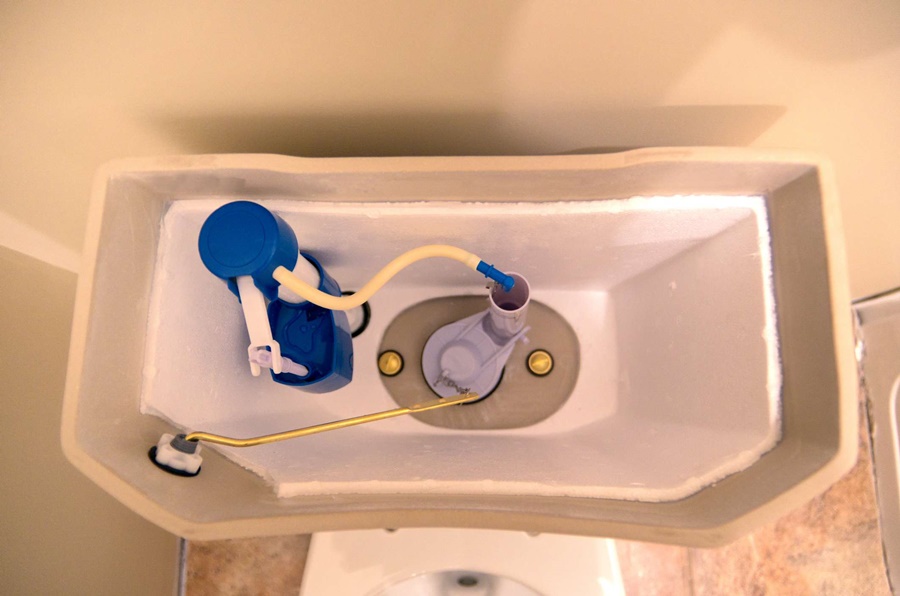A toilet that won't fill with water can be a frustrating and inconvenient issue. In this detailed guide, we will thoroughly explore why there is no water in your toilet tank, the possible causes, and the most effective solutions to restore proper toilet function. Whether you're a homeowner, renter, or property manager, this guide offers everything you need to troubleshoot and fix the issue efficiently.
Understanding How a Toilet Tank Fills with Water
Before we dive into the problems, it's crucial to understand how the toilet tank works. After each flush, the tank refills with water through a fill valve connected to your home's water supply. The process is regulated by a float mechanism that controls the water level, ensuring the tank doesn't overflow. When something goes wrong with any part of this system, the tank may fail to fill with water.
Common Reasons Why There Is No Water in the Toilet Tank
1. Water Supply Valve Is Turned Off
The most common and often overlooked reason is that the shut-off valve (located on the wall behind the toilet) is turned off. This valve controls the flow of water into the toilet tank.
Solution:
Turn the valve counterclockwise to ensure it is fully open. If water starts to flow, the issue is resolved.
2. Faulty or Clogged Fill Valve
A clogged or malfunctioning fill valve can prevent the tank from refilling. Sediment buildup from hard water can restrict the flow of water through the valve.
Solution:
Turn off the water supply.
Remove the fill valve cap.
Inspect for debris and clean thoroughly.
If cleaning doesn't resolve the issue, consider replacing the valve entirely.
3. Damaged Float or Float Arm
The float mechanism tells the fill valve when to stop adding water. If the float is stuck in the "up" position or is damaged, it may trick the system into thinking the tank is already full.
Solution:
Check the float for damage or misalignment.
Gently move the float up and down to see if it is stuck.
Adjust or replace the float if necessary.
4. Clogged Inlet Tube or Water Supply Line
Sometimes, the issue lies within the supply line or inlet tube being blocked. Mineral deposits, rust, or debris can obstruct water flow.
Solution:
Turn off the water supply and disconnect the line.
Inspect the supply line and flush it with clean water.
Use a thin wire or pipe cleaner to dislodge any debris from the inlet.
5. Broken Fill Valve Diaphragm
Inside the fill valve, a rubber diaphragm regulates water intake. If this diaphragm is torn or worn out, it won't allow water through the valve.
Solution:
Replace the fill valve entirely, as individual parts are difficult to replace effectively.
6. Low Water Pressure
If your home is experiencing low water pressure, it might not be enough to fill the tank properly.
Solution:
Check other water outlets in your home to confirm.
Contact your local water utility or plumber to diagnose and resolve the pressure issue.
7. Frozen Pipes (in Cold Climates)
In regions with freezing temperatures, pipes leading to the toilet may freeze, blocking water flow completely.
Solution:
Carefully thaw the pipe using a hair dryer or space heater.
Insulate the pipes to prevent future freezing.
8. Internal Tank Leaks
Cracks or internal damage inside the toilet tank can prevent it from retaining water, although this is less common.
Solution:
Inspect the tank for visible cracks or leaks.
If the tank is damaged, it will likely need to be replaced.
Step-by-Step Guide to Diagnosing the Issue
1. Inspect the Water Supply Valve
Ensure the shut-off valve is open and supplying water to the tank.
2. Check the Fill Valve and Float Assembly
Remove the tank lid and observe whether the float is rising and the valve is attempting to fill.
3. Listen for Sounds
A silent tank could mean no water is flowing at all, while a faint hissing could indicate a slow leak or obstruction.
4. Inspect the Supply Line
Turn off the valve, disconnect the line, and check for blockages.
5. Test Water Pressure
Run other faucets to determine whether this is a localized or house-wide issue.
How to Replace a Faulty Fill Valve
If your investigation leads to a faulty fill valve, replacing it is often the most reliable fix. Here's a basic overview:
1. Turn off the water supply and flush the toilet to empty the tank.
2. Unscrew the old fill valve from the bottom of the tank.
3. Insert the new fill valve, adjusting the height according to your tank size.
4. Tighten all connections and turn the water supply back on.
5. Test the system for leaks and proper operation.
Preventative Maintenance Tips for Toilet Tanks
Clean the fill valve every 6–12 months to remove sediment.
Inspect the float mechanism regularly for wear and tear.
Flush your water supply lines annually if you live in a hard water area.
Insulate pipes before winter to prevent freezing.
When to Call a Professional Plumber
While most toilet tank issues are DIY-friendly, some scenarios require professional help:
Persistent low water pressure
Internal leaks inside the toilet tank
Complex plumbing systems with inaccessible shut-off valves
Calling a licensed plumber can save time and prevent more extensive damage.
Conclusion
A toilet tank not filling with water is a common but solvable problem. By following this detailed troubleshooting guide, you can identify the root cause and apply the correct solution with confidence. Consistent maintenance and quick repairs will ensure your toilet system remains functional and efficient for years.

